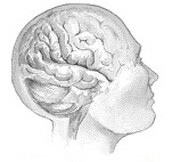
FRIDAY, April 17, 2015 (HealthDay News) — It’s long been known that people with Down syndrome are at higher risk for Alzheimer’s disease.
Now, research suggests that changes in the brains of people with Down syndrome, as seen on brain scans, might help lead to promising treatments that could delay or prevent Alzheimer’s.
“We and other researchers have been interested in detecting and tracking Alzheimer’s, starting before the onset of cognitive [thinking] impairment in individuals at genetic risk for the disease,” study senior researcher Dr. Eric Reiman, executive director of Banner Alzheimer’s Institute, said in an organization news release.
“We have used this approach to help launch Alzheimer’s prevention trials in people with other genetic risk factors, and we hope that the same approach can help empower people with Down syndrome in the fight against this disease,” he explained.
Along with medical advancements that have enabled people with Down syndrome to live longer, there’s also come the realization that they face an 80 percent risk of developing Alzheimer’s disease, according to the news release.
That’s because people with Down syndrome carry three copies of chromosome 21, which carries a gene for the so-called amyloid precursor protein. This leads to the overproduction of amyloid, a protein strongly linked to Alzheimer’s disease, as well as thinking and memory problems at a young age.
For people with Down syndrome, brain changes that are tied to Alzheimer’s are seen on scans beginning around the ages of 35 to 40, Reiman’s team found.
“The number of people with Down syndrome who go on to Alzheimer’s symptoms has tripled in the last 20 years,” said the study’s lead researcher, Marwan Sabbagh, director of Banner Sun Health Research Institute. “There is a growing need to find interventions to treat and prevent Alzheimer’s in these individuals, and there is an opportunity to do so in a way that could help find effective Alzheimer’s prevention therapies for everyone.”
The study, published online recently in Alzheimer’s & Dementia, involved five people with Down syndrome who had already developed symptoms of Alzheimer’s, 12 people with Down syndrome who had no symptoms of Alzheimer’s, and nine “control” participants who did not have Down syndrome or Alzheimer’s disease.
The investigators used brain-imaging technology, known as PET scans, to look for signs of beta-amyloid accumulation and patterns of reduced brain activity associated with Alzheimer’s.
The researchers also used MRI scans to measure the volume of “gray matter” in the study participants’ brains.
The study found that the people with Down syndrome who also had Alzheimer’s symptoms had much greater buildup of beta-amyloid, less activity in parts of the brain known to be affected by Alzheimer’s, and smaller gray matter volumes than people from the other two groups.
Moreover, the people with Down syndrome who didn’t yet develop symptoms of Alzheimer’s had more amyloid protein than the control group, the findings showed.
The researchers believe that the buildup of this protein begins early on, before memory and thinking problems develop. The authors suggested that the findings could help researchers design new prevention trials among people with Down syndrome.
More information
The U.S. National Institute on Aging has more about Alzheimer’s disease.
Copyright © 2025 HealthDay. All rights reserved.

